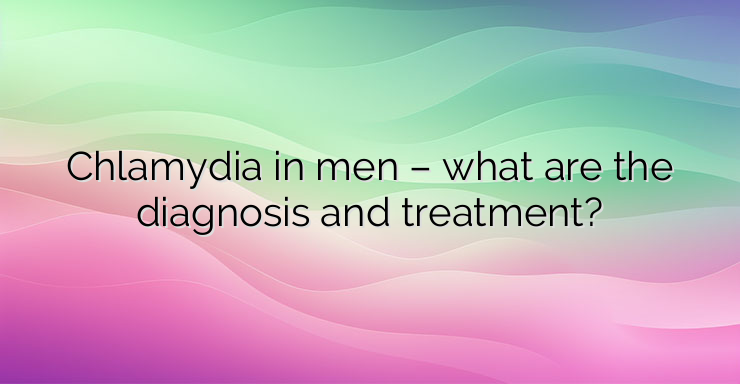Chlamydia is a common sexually transmitted disease. It is caused by a bacterium called Chlamydia trachomatis. It can infect both men and women. However, men rarely have significant symptoms related to chlamydia. Symptoms of chlamydia in men include – pain when urinating; white, cloudy or watery discharge from the penis; burning or itching in the urethra (the tube that carries urine away from the body), pain in the testicles. How can chlamydia infection be confirmed? When noticing symptoms of chlamydia, it is necessary to seek medical help as soon as possible in order to appoint tests for chlamydia or other sexually transmitted infections. Different diagnostic methods can be used to detect chlamydia in men, which include: Urine test; The microbiological examination of throat secretion; Blood test What happens if chlamydia in men is not treated? Chlamydia infections do not go away on their own, they must be treated with antibiotics. If left untreated, chlamydial infections in men can lead to: Prostatitis; Chlamydial urethritis in men; Non-gonococcal urethritis; Epididymitis; Reactive arthritis; Infertility It should not be forgotten that chlamydia often does not cause any symptoms. If there is even a minimal risk of infection, the best option is to get tested as soon as possible to avoid long-term problems. Chlamydia can be difficult to recognize among the many sexually transmitted infections because it often causes no symptoms. If, however, a patient’s examination reveals the presence of chlamydia, a course of antibiotic treatment will most likely be necessary. It should not be forgotten to complete the full course of treatment as prescribed by the doctor. Treatment for chlamydia usually includes the antibiotics azithromycin and doxycycline. Treatment for chlamydia is the same for men and women. The doctor may prescribe antibiotics as a single larger dose or as a series of smaller doses over 7 days. Also, the patient should not forget to notify their last sexual partners so that they can also be tested and treated if necessary. Bibliography: Centers for Disease Control and Prevention (CDC). Chlamydia – CDC fact sheet Healthline. Male Chlamydia Symptoms to Watch For National Health Service (NHS). Causes: Non-gonococcal urethritis


Leave a Reply